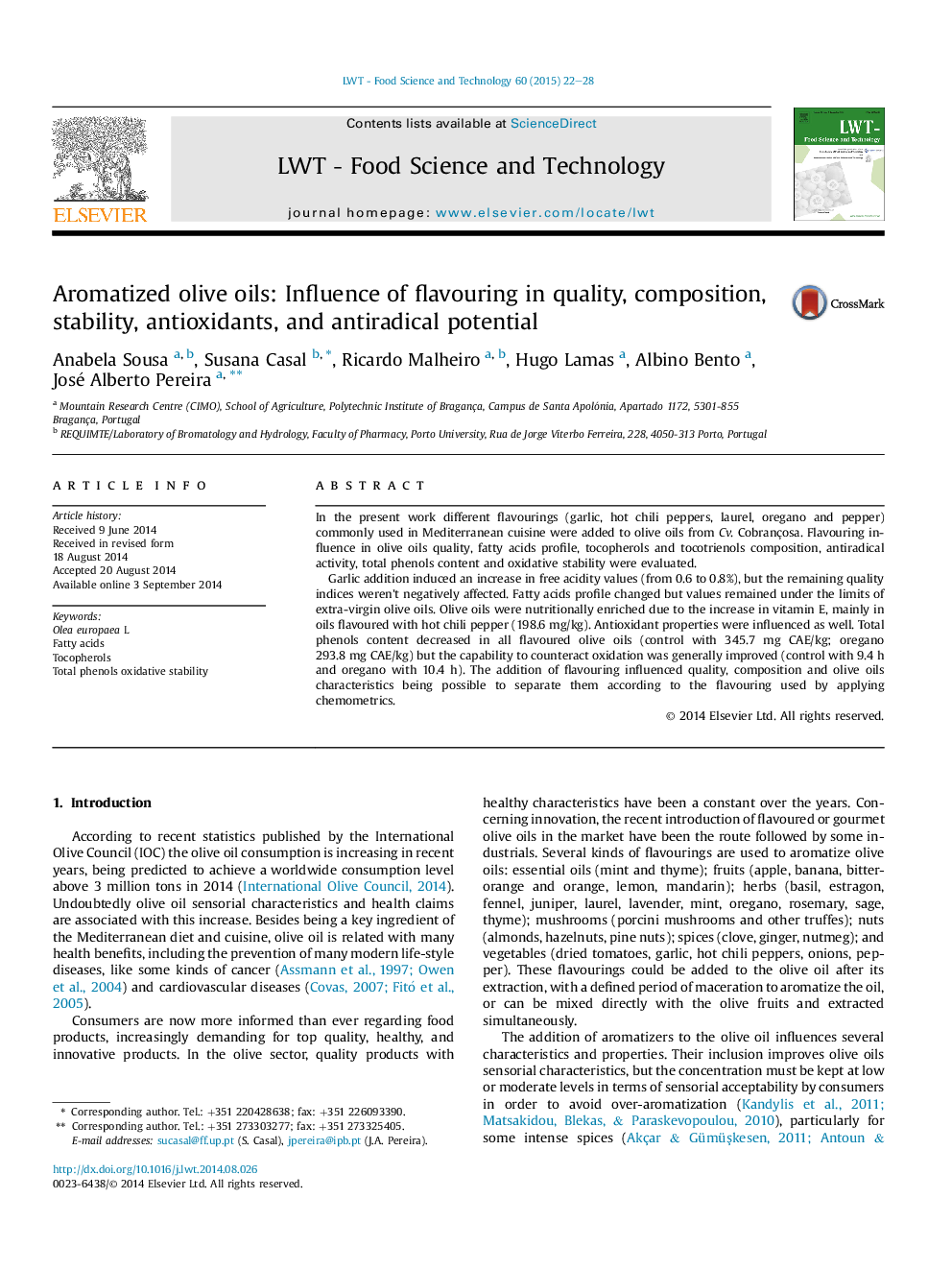| Article ID | Journal | Published Year | Pages | File Type |
|---|---|---|---|---|
| 6402782 | LWT - Food Science and Technology | 2015 | 7 Pages |
â¢Diverse flavoured olive oils were compared for composition and antioxidant activity.â¢Differentiated effects were observed and corroborated by chemometrics.â¢Garlic and oregano decreased the formation of primary oxidation products.â¢Flavouring induced a generalized loss of total phenols in olive oils.â¢Oxidative stability was improved, except for the laurel addition.
In the present work different flavourings (garlic, hot chili peppers, laurel, oregano and pepper) commonly used in Mediterranean cuisine were added to olive oils from Cv. Cobrançosa. Flavouring influence in olive oils quality, fatty acids profile, tocopherols and tocotrienols composition, antiradical activity, total phenols content and oxidative stability were evaluated.Garlic addition induced an increase in free acidity values (from 0.6 to 0.8%), but the remaining quality indices weren't negatively affected. Fatty acids profile changed but values remained under the limits of extra-virgin olive oils. Olive oils were nutritionally enriched due to the increase in vitamin E, mainly in oils flavoured with hot chili pepper (198.6 mg/kg). Antioxidant properties were influenced as well. Total phenols content decreased in all flavoured olive oils (control with 345.7 mg CAE/kg; oregano 293.8 mg CAE/kg) but the capability to counteract oxidation was generally improved (control with 9.4 h and oregano with 10.4 h). The addition of flavouring influenced quality, composition and olive oils characteristics being possible to separate them according to the flavouring used by applying chemometrics.
